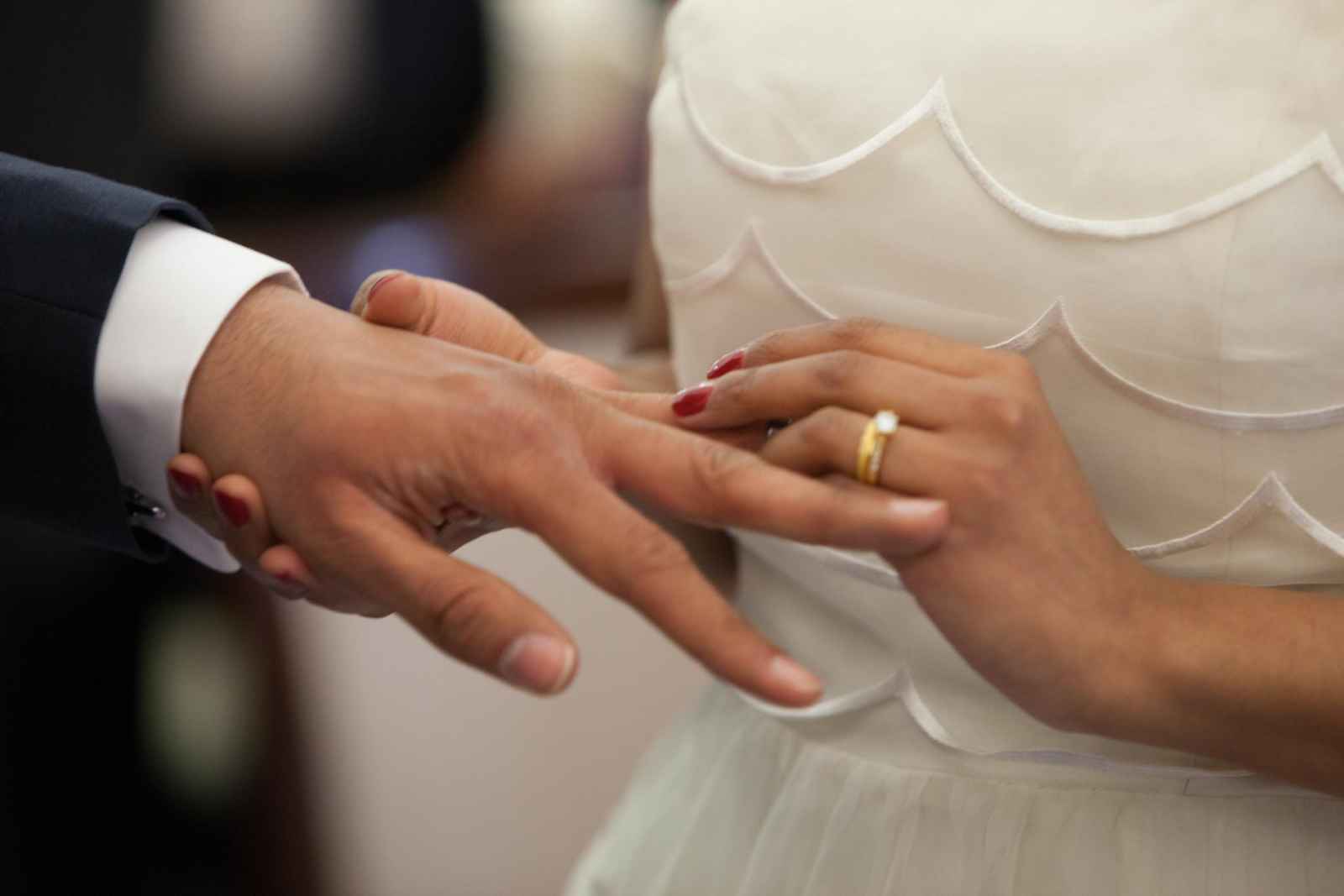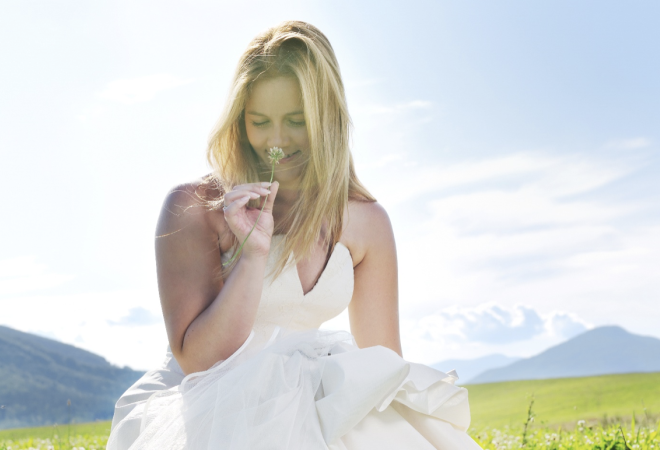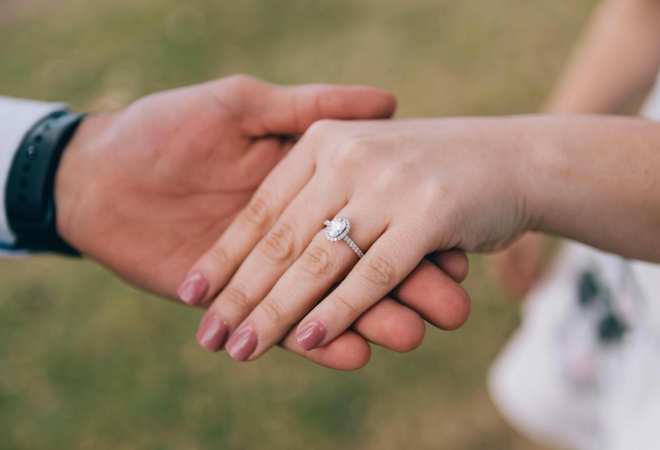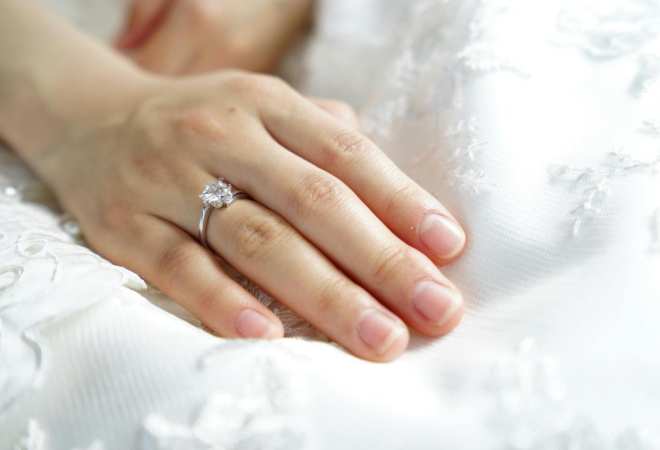Wedding day traditions resonate across cultures, from wearing a veil to the solemn exchange of rings. Have you ever wondered about the origins of these celebrated rituals?
Discover surprising facts about eight symbolic rites that still enrich today’s celebrations.
1. White Wedding Dress
The tradition started with Queen Victoria’s wedding to Prince Albert in 1840 when she wore a light-colored satin gown. Soon after, many wealthy brides who wanted to look regal mimicked the dress and the color, which symbolizes purity and virtue. The trend eventually became more accessible to all economic levels.
Nontraditional wedding dress styles have become in demand as women look for ways to celebrate their unique personalities. From bold cuts to bright colors, some modern gowns shy away from modest appeal. Daring dresses with features like sheer fabric, plunging necklines and thigh-high slits have also become popular.
2. Veil
For many years, religions such as Christianity, Islam, Judaism and Hinduism have used different veils during wedding ceremonies. Although the veil’s history varies, most experts agree that its roots refer to ancient Roman brides who used yellow veils to signify modesty.
For Jewish brides, it’s a tribute to the story of Jacob, who was tricked into marrying Leah instead of Rachel — lifting the cloth allows the groom to see if he’s tying the knot with the right person.

3. Fathers Hand Off the Bride
The practice where the father “gives his daughter away” comes from the 1549 Book of Common Prayer, which noted it as a business transaction. It came from a time when women were the property of men. Fathers “giving” their daughters to their husbands symbolizes the transfer of ownership. (Yikes.)
In many traditional weddings, couples still honor this ritual. However, more brides are open to choosing others, such as their brother, stepfather, uncle, grandparent or a close friend, to hand them off to their future spouse.
4. Cigars
For many years, people used cigars to celebrate life’s finest moments, including wedding celebrations. The first sources of tobacco cigars were the ancient Mayans and Cubans. It was common for wealthy families to offer cigars during formal ceremonies, which signifies their affluence and status. Over time, it has become a vessel for socializing and relaxation.
Today, some couples add cigar bars to their reception to add a touch of sophistication. It also provides an avenue where people can relax and enjoy the company of other guests.
5. Bachelor Parties
Men celebrate the end of a single era with a stag party. The tradition comes from the Spartans, who would plan a dinner for the groom-to-be before the wedding, which used to be called a “gentlemen’s dinner.”
Dinners were eventually replaced with parties — a celebration of the groom soon became a night of freedom. The best man takes responsibility for planning and throwing a stag party a few days or weeks before the big day.
6. Honeymoon
For such a joyous occasion, the honeymoon history is a bit dark. It dates back to when a man snatched the bride and transported her to a secret location away from the woman’s family. They will stay somewhere distant until the wife’s kin gives up the search or after pregnancy.
The term “honeymoon” came from the Scandinavian tradition of mead drinking after one month of marriage to increase the chances of conception. Modern-day honeymooners now use this post-wedding custom to decompress after their big day. The practice has evolved so much that you can even hire a honeymoon planner to arrange the trip for you and your partner.

7. Wedding Rings
Egyptian pharaohs initially used these symbols of love to represent eternity. The shape has no beginning and end and mimics the shape of the sun and moon—two symbols Egyptians worshiped most. Soon enough, the Greeks and Egyptians exchanged gold rings to represent their love and devotion to one another. Like today’s ceremonies, ancient people also wore rings on the fourth finger of their left hand since it’s directly connected to the heart.
Standards have evolved since ancient times. Nowadays, many people opt for diamond rings because of their enduring value and reputation as one of the hardest-known materials on Earth. The rise in demand can also be attributed to DeBeers, a famous diamond company, for its “A diamond is forever” slogan in 1947. The advertisement, honored as “The Slogan of the Century” by Advertising Age, convinced the public that a diamond ring means your love will last forever.
8. Bouquet Toss
Throwing the bouquet started before the 1800s in England when hopeful girls touched the bride on her big day for good fortune so they’d get married soon. Single women would even go as far as ripping the wedding gown into pieces to keep a piece of luck with them. To escape, the bride would toss her flowers and run away, hence the birth of this ritual.
Marriage traditions have progressed, but the significance of this ritual remains the same. In the modern age, tossing the bouquet is now a fun way for a bride to celebrate her single women friends.
Make the Most of Wedding Traditions
Understanding the origins of symbolic practices provides a deeper appreciation for their significance. Incorporate the ones that resonate with you to make your ceremony meaningful and timeless.

Author Bio: Oscar Collins is the editor-in-chief at Modded, where he writes about a broad spectrum of topics. Follow him on Twitter @TModded for frequent updates on his work.
are you a bride or groom-to-be?
We'd love to plan with you on weddingday-online.com. Let's get started!
are you a wedding extraordinaire?
Join WeddingDay Magazine in inspiring brides by partnering with us! See how here.








Join the conversation
Log in or register to post comments